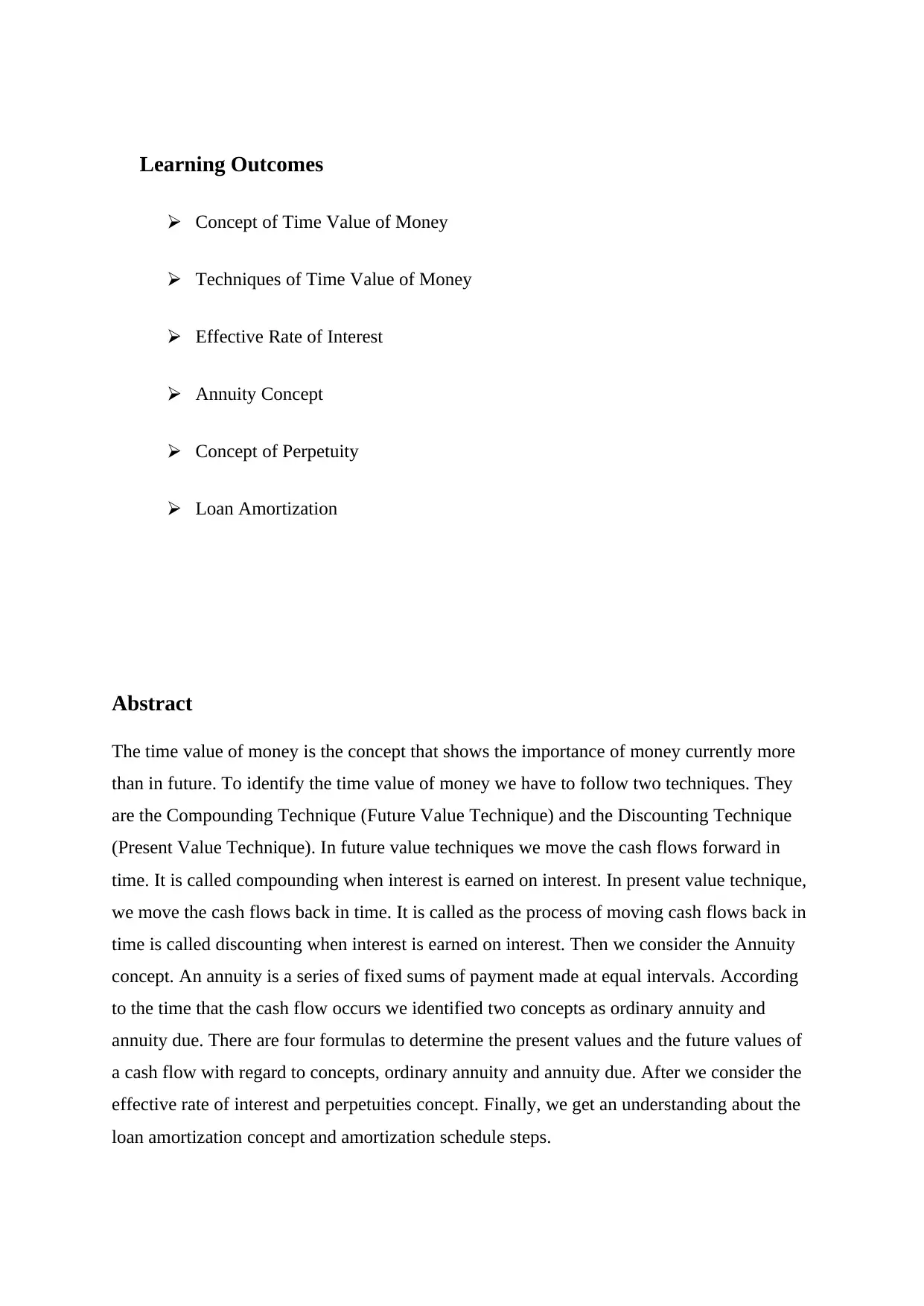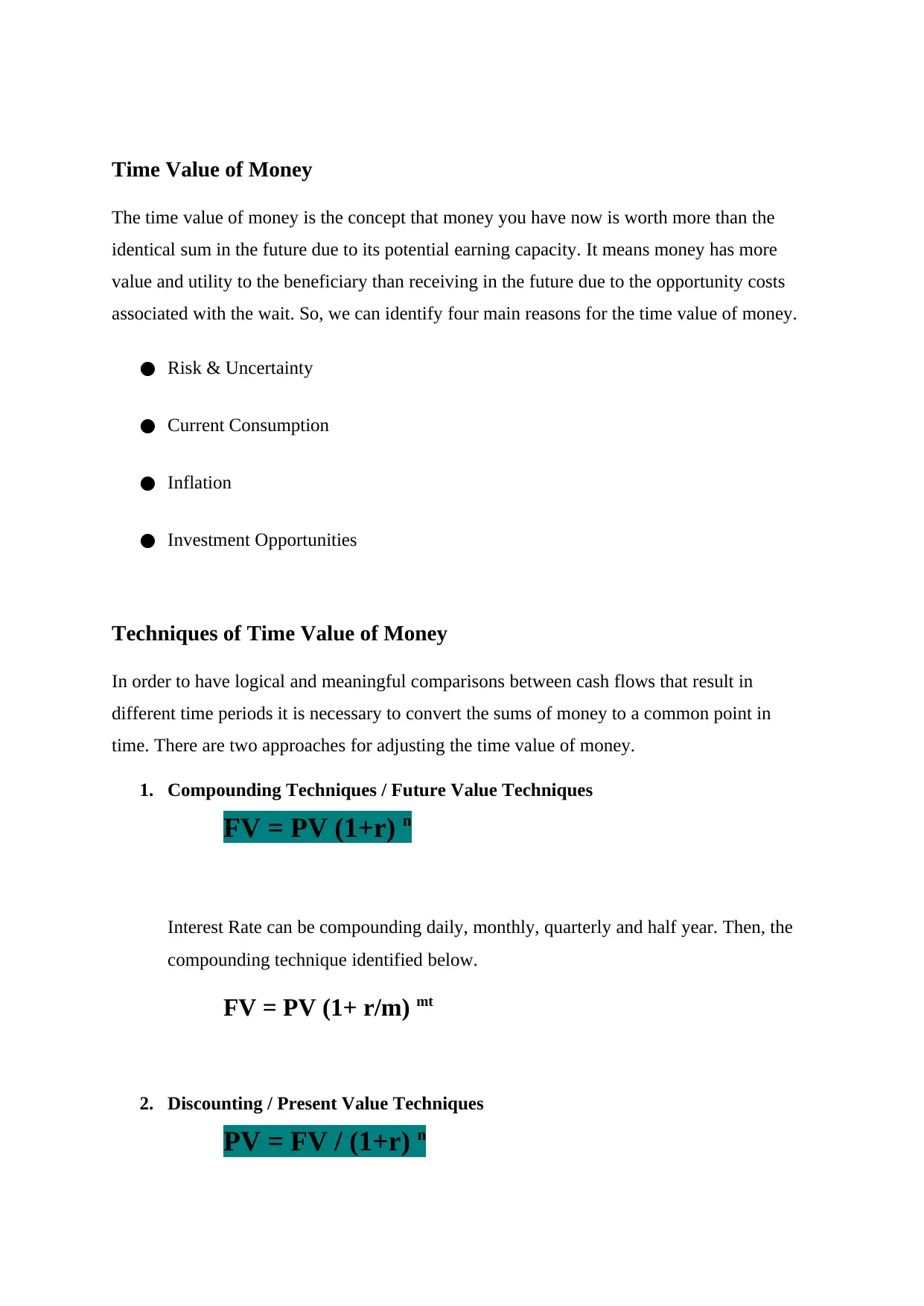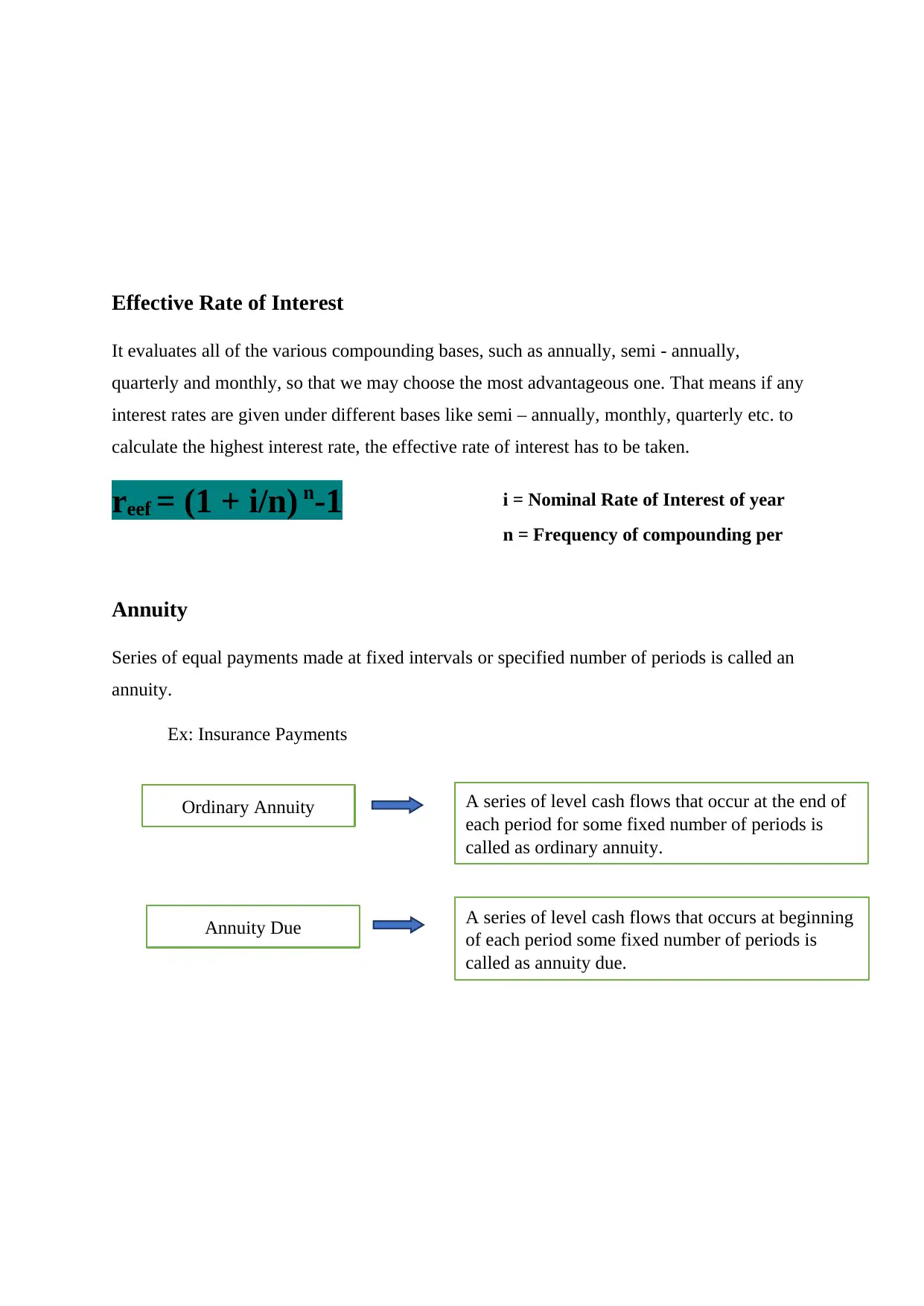Comprehensive Analysis of Time Value of Money in Financial Management
VerifiedAdded on 2022/01/19
|5
|816
|492
Report
AI Summary
This report provides a comprehensive overview of the time value of money (TVM), a fundamental concept in finance, emphasizing that money available at the present time is worth more than the same amount in the future due to its potential earning capacity. It explores two primary techniques for evaluating TVM: compounding (future value) and discounting (present value), along with the effective rate of interest. The report further delves into the concept of annuities, differentiating between ordinary annuities and annuities due, and presents formulas for calculating present and future values in both scenarios. Additionally, it covers perpetuities and their present value calculations, concluding with an explanation of loan amortization, including the steps involved in creating an amortization schedule. The report includes references to credible sources like Investopedia and financial textbooks.
1 out of 5












![[object Object]](/_next/static/media/star-bottom.7253800d.svg)